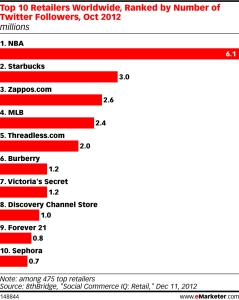The concept of crowdsourcing in all its forms- user generated content and crowdfunding for example, continues to evolve and become more popular. With sites such as unsplash.com, Kickstarter and Threadless at the top of my list.
The evolution of the cloud has allowed for an interconnection of talents or resources from a community of engaged individuals- who come together to collectively be a part of something. For example, in 2012 alone, fund-raising crowdsourcing platforms raised $2.7 billion-according to the Crowdfunding Industry Report by Massolution.
Of course, crowdfunding has become especially common amongst entrepreneurs who seek to fund a business initiative via crowdsourcing platforms. This medium arguably gives entrepreneurs a sense of market demand for their product or service, which can serve as a sales-forecast tool of sorts. Some of the most well-known crowdfunding sites for fundraising include the likes of kickstarter.com, indiegogo.com and crowdfunder.com.
Design crowdsourcing, or sometimes referred to as “open-innovation” or “co-creation”, is a medium to produce a design (anything from a logo, product engineering, web-design, illustration and anything else in between) from people who can be stationed at any place in the world, at any time of the day.
As a business owner, a huge benefit of utilizing co-creation as part of the design process, is the cost benefit attached to it. Design crowdsourcing platforms usually offer its services at a deep discount compared to what you would have to pay for those services in the real world.
As a creative, on the other hand, utilizing a design crowdsourcing platform can come with its challenges- many times associated with the ambiguous payout to the designer. However, for a designer who is highly talented and is just starting in the field, joining one of these platforms could mean a great way to get his or her work known, and starting a portfolio of design achievements. Some of my personal favourite design crowdsourcing platforms include: www.tongal.com, www.geniusrocket.com, and www.designcrowd.com
So does design crowdsourcing induce or inhibit creativity?
The answer is- when done correctly YES- it can indeed induce creativity! And for that I have a great example of a company that has gone to great lengths to induce creativity amongst its members: Threadless.com
With about 1.4 million registered users, Threadless.com has a very simple mission: to inspire awesomeness. And inspire awesomeness it has done. The threadless.com community is very strong, so much so that it has one of the highest twitter following worldwide (#5 in 2012, see chart to view ranking).  It has succeeded in applying some of the best community practices by highly valuing the input of all of its members.
It has succeeded in applying some of the best community practices by highly valuing the input of all of its members.
Takeaways: what has Threadless.com done to keep its platform so successful?
- The community is collaborative vs. competitive: there is open feedback on on-going projects, and designers/artists have the opportunity to grow professionally by learning from one another
- Community members have a vote in the decision-making process: Threadless engages its community by getting feedback on various processes. From crowdvoting on the final “winning” t-shirt design, to asking its community to weigh in on company decisions, for example: whether to open a physical retail store to sell its merchandise.
- Open communication and a sense of humour with its stakeholders. Threadless has stayed true to its original values of keeping a sense of humour in everyday operations, and keeping an extremely transparent communication with its key stakeholders- to the point that they are okay with admitting when mistakes have been made.
Inducing creativity within the design crowdsourcing sphere is really about giving the right tools to an already talented pool of people. It’s about keeping a focus on the mission of the platform, and on treating all members, both artists and consumers, in a fair manner.
Ultimately, design crowdsourcing proves that anyone in the world can find the right inspiration, and medium to launch ones own creations- without the need of a brick and mortar intermediary such as having to be part of an advertising agency. As someone I know once said:
“creativity doesn’t need an office”.


